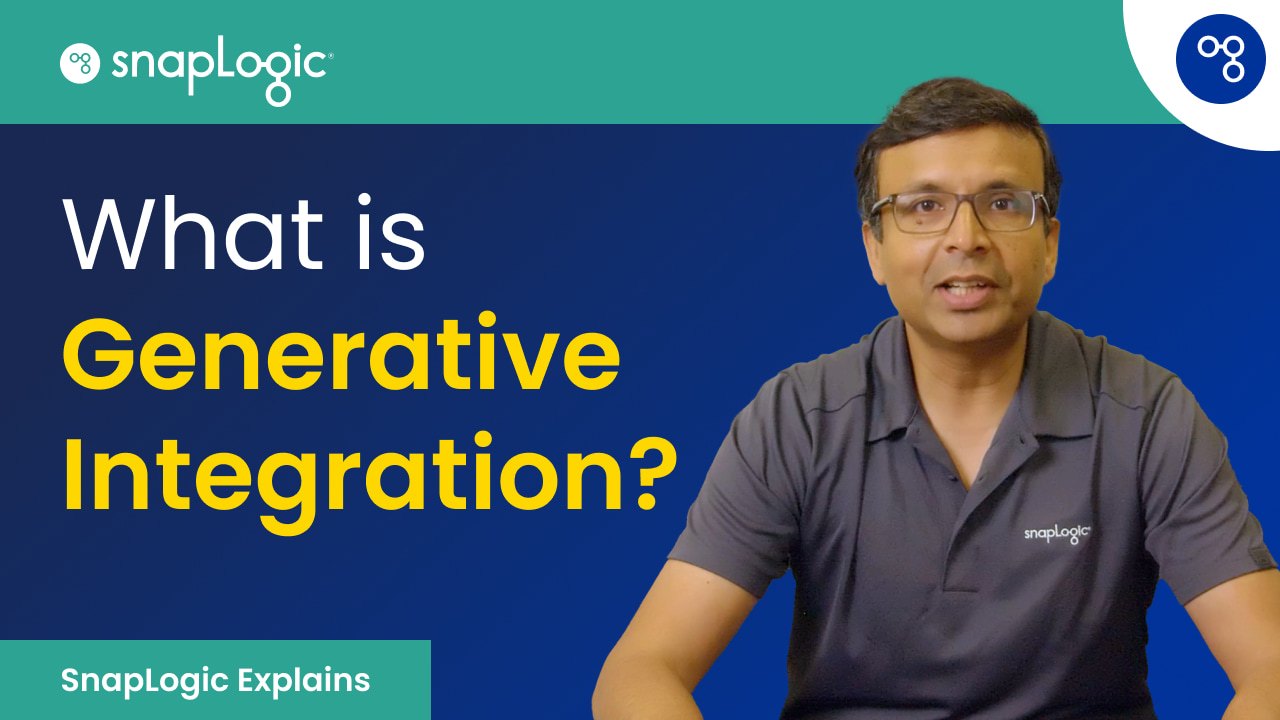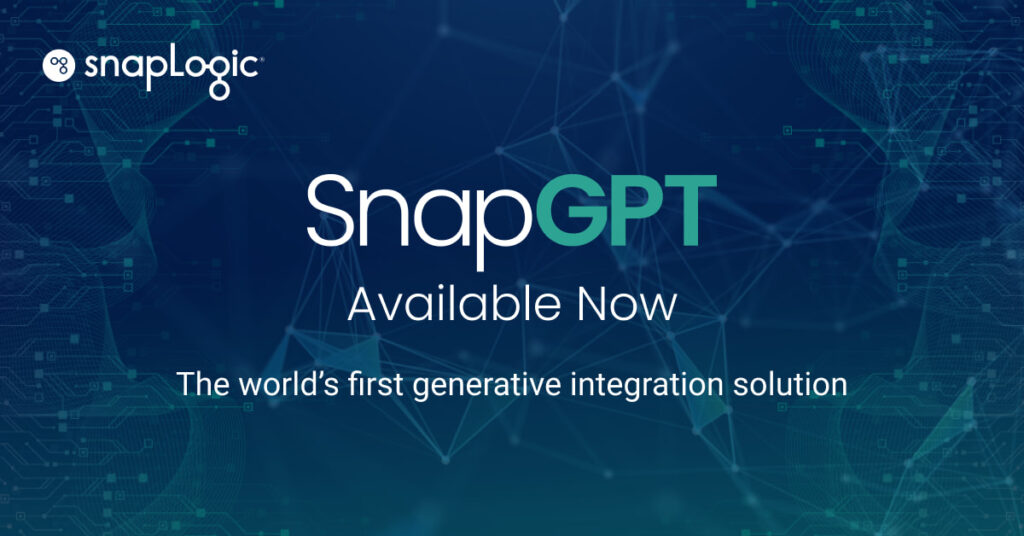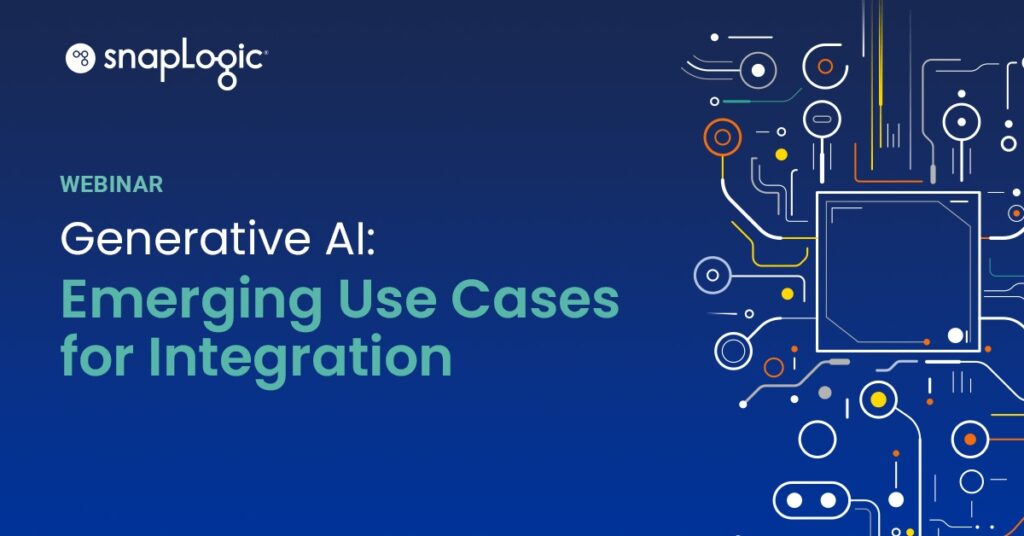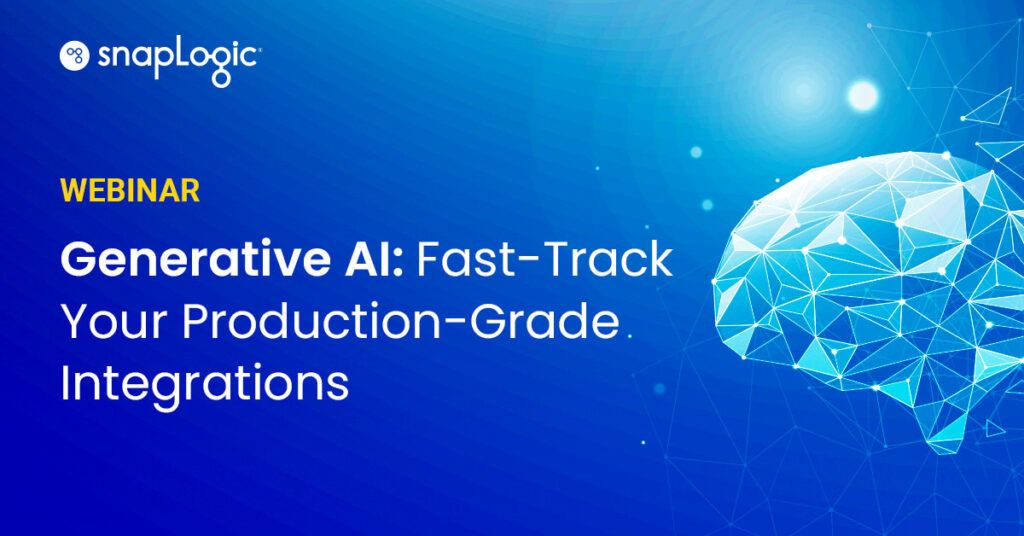What is Generative Integration?
In technology, generative integration is a combination of the terms generative AI (i.e., ChatGPT) and integration (i.e., connecting technologies such as data, systems, and applications).
Generative integration is an advanced approach to data and application integration that leverages generative AI (GenAI) and large language models (LLM) to securely automate the creation of integration pipelines and streamline the process of connecting disparate systems and data sources.
By utilizing AI and machine learning capabilities, generative integration can understand, interpret, and generate code, significantly reducing manual effort for IT teams and improving the efficiency and accuracy of data integration tasks. This revolutionary combination of technology offers an opportunity to make data and application integration and business process automation easy to implement, accessible to non-technical staff, and more effective.

What are some use cases for generative integration?
Create integration prototypes
Generative integration can assist users in crafting a starting pipeline or workflow for integration.
Identify accurate templates for use cases
Most integration vendors offer templates or patterns. Generative AI can more effectively pinpoint the best templates for specific use cases.
Generate sample data for testing
Integration creators often painstakingly create sample data to test integrations. Generative AI excels at producing realistic synthetic data for this purpose.
Create expressions for data transformation
Integration tools differ in expression language, which can be daunting for citizen developers. Gen AI can translate user intentions into fully formed expressions, simplifying the process.
Generate accurate SQL queries for data extraction
Advanced users frequently rely on SQL to extract data from databases. Creating and debugging SQL queries can be time-consuming and expensive. Gen AI can help formulate accurate queries based on user intentions.
Simplify data mappings
Different applications often have distinct data structures, making mapping a challenging task. Generative AI can streamline this process by intelligently suggesting mappings based on available metadata.
Document integrations
Generative AI can automatically generate clear and concise documentation for integrations, making it easier for colleagues to understand and maintain them.
Provide more relevant help
Generative AI can offer more contextually relevant assistance, guiding users through the integration process with personalized support.
Create connectors to applications
Vendors typically supply pre-built connectors for widely-used applications. Generative Integration can empower users to generate new connectors on demand, further expanding the integration possibilities and catering to more specific needs.
Interested to learn more?
Understand how enterprises are leveling up with Agentic Integration.





